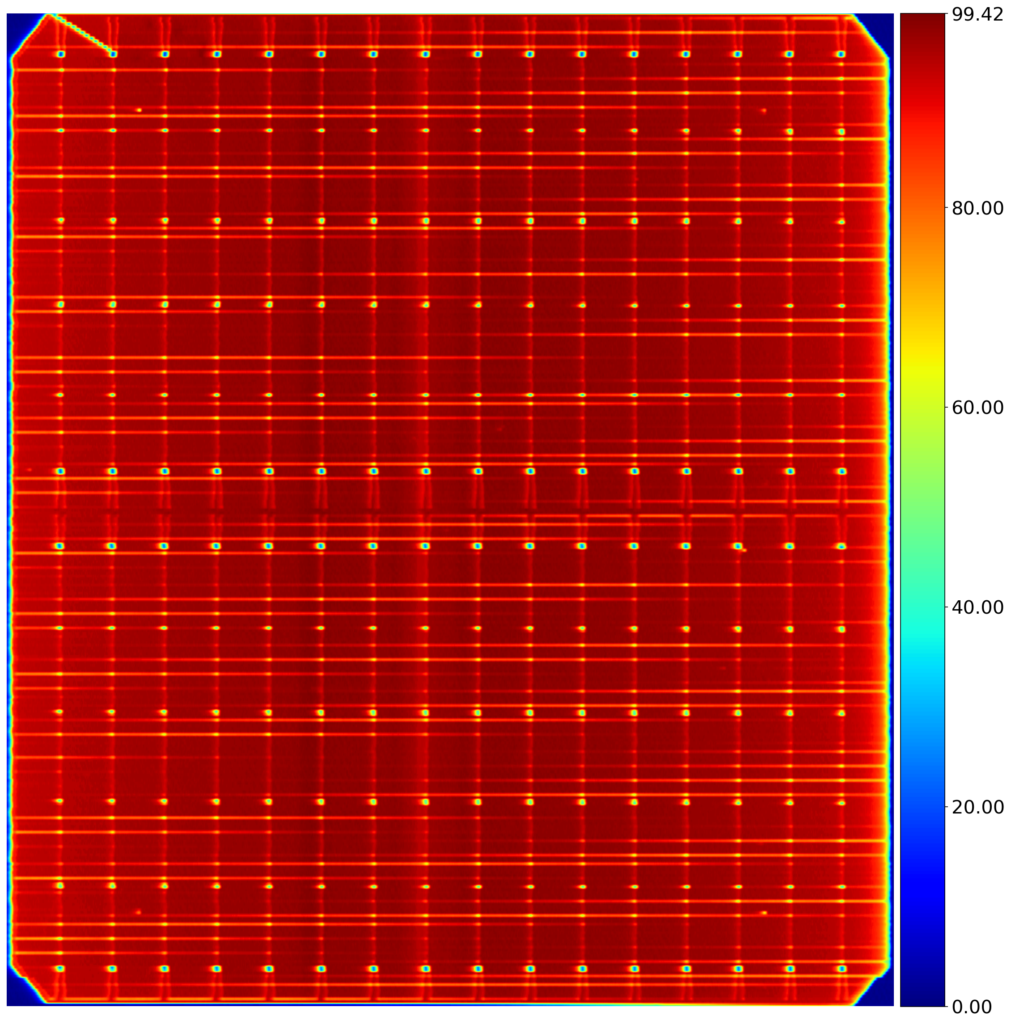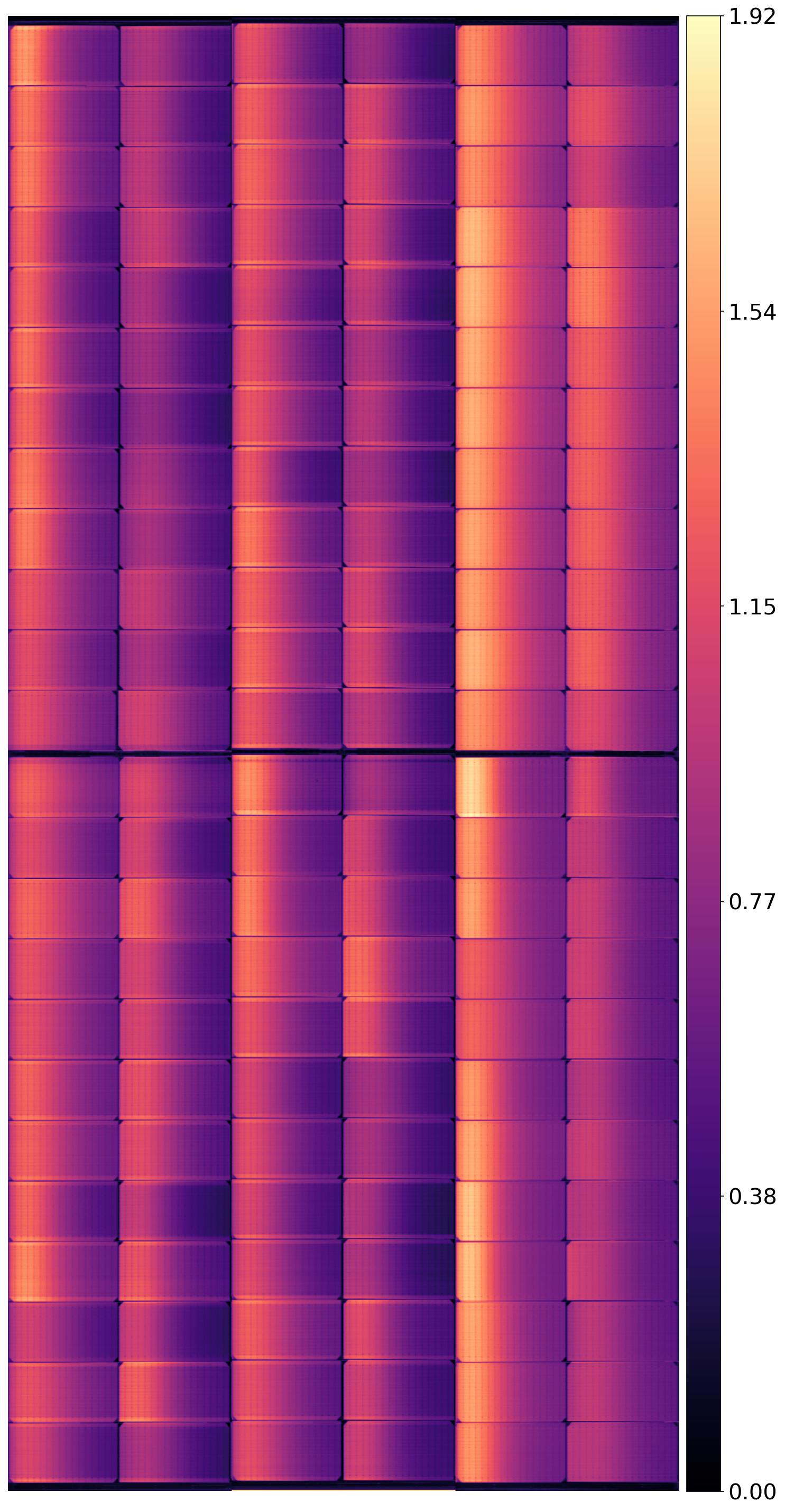Light Beam Induced Current (LBIC)
Light Beam Induced Current (LBIC) imaging is a diagnostic technique used to assess the performance and identify defects in solar photovoltaic (PV) modules by measuring the current generated in response to a focused light beam. This method provides detailed spatial resolution of the photovoltaic response across the module, allowing for precise identification of various defects and inefficiencies.

How LBIC Imaging Works
- Light Beam Scanning:
A focused light beam, typically from a laser or high-intensity light source, is scanned across the surface of the solar module. As the light beam moves, it induces a current in the illuminated area of the module.
- Current Measurement:
The current generated by the illuminated section is measured using sensitive electronic equipment. The measurements are recorded as the light beam scans the entire module surface.
- Image Construction:
The recorded current values are mapped to their corresponding positions on the module to create a spatially resolved image. This LBIC image highlights areas with varying current responses, indicating different levels of performance and the presence of defects.
Types of Defects Detected by LBIC Imaging
- Operationally Significant Microcracks
- Low Shunt cells
- Inactive/Isolated Areas
- Material Inhomogeneities
- Absorption and Reflection Losses
- Quantum efficiency of cells at multiple wavelengths
- Cell finger electrode discontinuity
Advantages of LBIC Imaging
- High Spatial Resolution
- Non-Destructive
- Quantitative Analysis
- Full Spectral Coverage
Applications of LBIC Imaging
- Research and Development
- Manufacturing Quality Control
- Testing and Standardization

